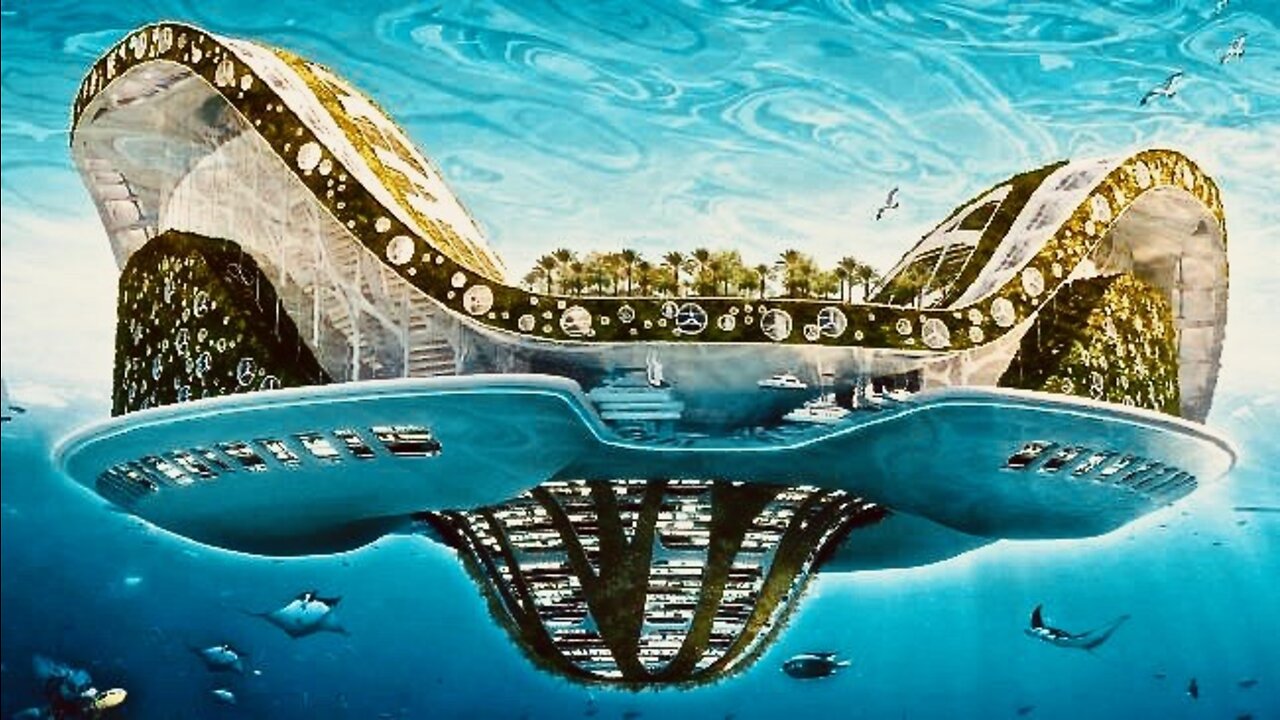Premium Only Content

Floating Cities of the Future
Plans for the world’s first “floating city” have been unveiled by California-based company Seasteading Institute, who have just signed a deal with the French Polynesian government to begin construction in the Pacific in two years' time. The Seasteading Institute has been working on its concept of what it calls “permanent, innovative communities floating at sea” for the last five years and has been searching for a host nation to trial it. The group is interested in the social aspect of a new kind of semi-independent community as well, seeing it as an ideal opportunity to try out new methods of running a society. From how to keep the atmosphere clean to potential new government styles, this could be a very interesting experiment indeed.
“What we're interested in is societal choice and having a location where we can try things that haven't been tried before,” explained Randolph Hencken, executive director of the institute. Although he did admit “'I don't think it will be that dramatically radical in the first renditions.”
The government of French Polynesia, a tiny Pacific state made up of over 100 islands, expressed interest in the project as rising sea levels is a very real threat to them and a permanent floating city could be an innovative way to deal with future displacement.
However, they specified two objectives the project must prove before plans can go ahead: The city must benefit the local economy and it must prove environmentally friendly. If these can be met, draft legislation will be drawn up next year and construction is expected to begin in 2019.
So far, the plans are mainly artist renderings and computer-generated designs of what the cities might look like, though the plan is for any floating community to include healthcare and medical research facilities, aquaculture farms, and sustainable energy plants.
The design is based on a plan for floating platforms that can be rearranged according to each city’s needs. The platforms will be made from reinforced concrete and be able to support three-story buildings such as offices, apartments, and hotels for up to 100 years. With around 250 to 300 residents to begin with, the city is predicted to cost around $167 million.
Whether it really will be feasible remains to be seen, but you can’t fault the institute for its imagination or the French Polynesia for attempting to address the future threat to its people now. We’ll be keeping an eye on how this develops.
Music: Svadhisthana by Dhruva Aliman
Amazon - https://amzn.to/3ex2DEb
https://music.apple.com/us/artist/dhruva-aliman/363563637
https://dhruvaaliman.bandcamp.com/album/neptunes-overtone
http://www.dhruvaaliman.com/
Spotify - https://open.spotify.com/artist/5XiFCr9iBKE6Cupltgnlet
-
 2:19
2:19
Seeker Land
2 months agoFunny - Democrats In Split Screen Saying LA Riots Are Peaceful
91 -
 0:55
0:55
KMGH
3 years ago3 Colorado cities on happiest cities list
4 -
 3:06
3:06
Matt Cochran's Movie Reviews
3 years agoMCMR's Future
32 -
 0:04
0:04
GreenLeafCoast
3 years ago $0.11 earnedMagical Floating Orb
85 -
 1:15:29
1:15:29
Flyover Conservatives
1 day agoFrom Cool to Cringe: How Democrats Lost America’s Ear | FOC Show
38.5K13 -
 8:19
8:19
MattMorseTV
11 hours ago $4.94 earnedTrump is ACTUALLY DOING IT.
36.5K37 -
 11:30:43
11:30:43
ZWOGs
13 hours ago🔴LIVE IN 1440p! - Tarkov w/ Casey & crgoodw1n, Kingdom Come Deliverance, & More - Come Hang Out!
32.2K5 -
 2:30:56
2:30:56
We Like Shooting
17 hours ago $2.71 earnedWe Like Shooting 625 (Gun Podcast)
28K1 -
 1:45:02
1:45:02
Glenn Greenwald
8 hours agoIsrael Slaughters More Journalists, Hiding War Crimes; Trump's Unconstitutional Flag Burning Ban; Glenn Takes Your Questions | SYSTEM UPDATE #504
132K177 -
 1:29:31
1:29:31
Killerperk
5 hours ago $0.78 earnedRoad to BF6. Come hang out #regiment #bf6
30.2K2